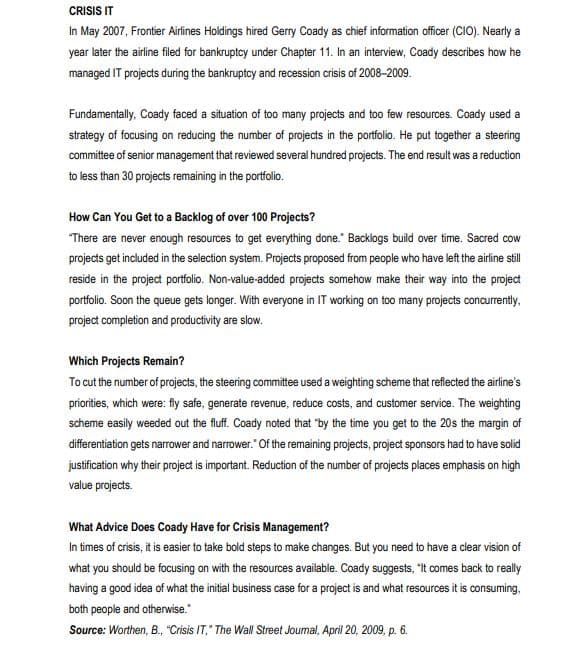To cut the number of projects, the steering committee used a weighting scheme that reflected the airline’s priorities, which were: fly safe, generate revenue, reduce costs, and customer service. The weighting scheme easily weeded out the fluff.” Use a weighted scoring model to help the committee choose between two projects: Booking System Upgrade and Cabin Crew Retraining. The relative weights for each criterion and the assessment of each project for these criteria are shown in the following table. Which project would you choose and why? Criteria Weight Booking System Upgrade Pilot Crew Retraining Fly safe 40 4 10 Generate revenue 30 9 9 Reduce costs 20 7 8 Customer service 10 10 10 (Assume 10 represents the preferred score and 1 represents the undesired score.)
“To cut the number of projects, the steering committee used a weighting scheme that reflected the
airline’s priorities, which were: fly safe, generate revenue, reduce costs, and customer service. The
weighting scheme easily weeded out the fluff.”
Use a weighted scoring model to help the committee choose between two projects: Booking System
Upgrade and Cabin Crew Retraining. The relative weights for each criterion and the assessment of
each project for these criteria are shown in the following table. Which project would you choose and
why?
Criteria Weight Booking System Upgrade Pilot Crew Retraining
Fly safe 40 4 10
Generate revenue 30 9 9
Reduce costs 20 7 8
Customer service 10 10 10
(Assume 10 represents the preferred score and 1 represents the undesired score.)

Step by step
Solved in 2 steps with 3 images









